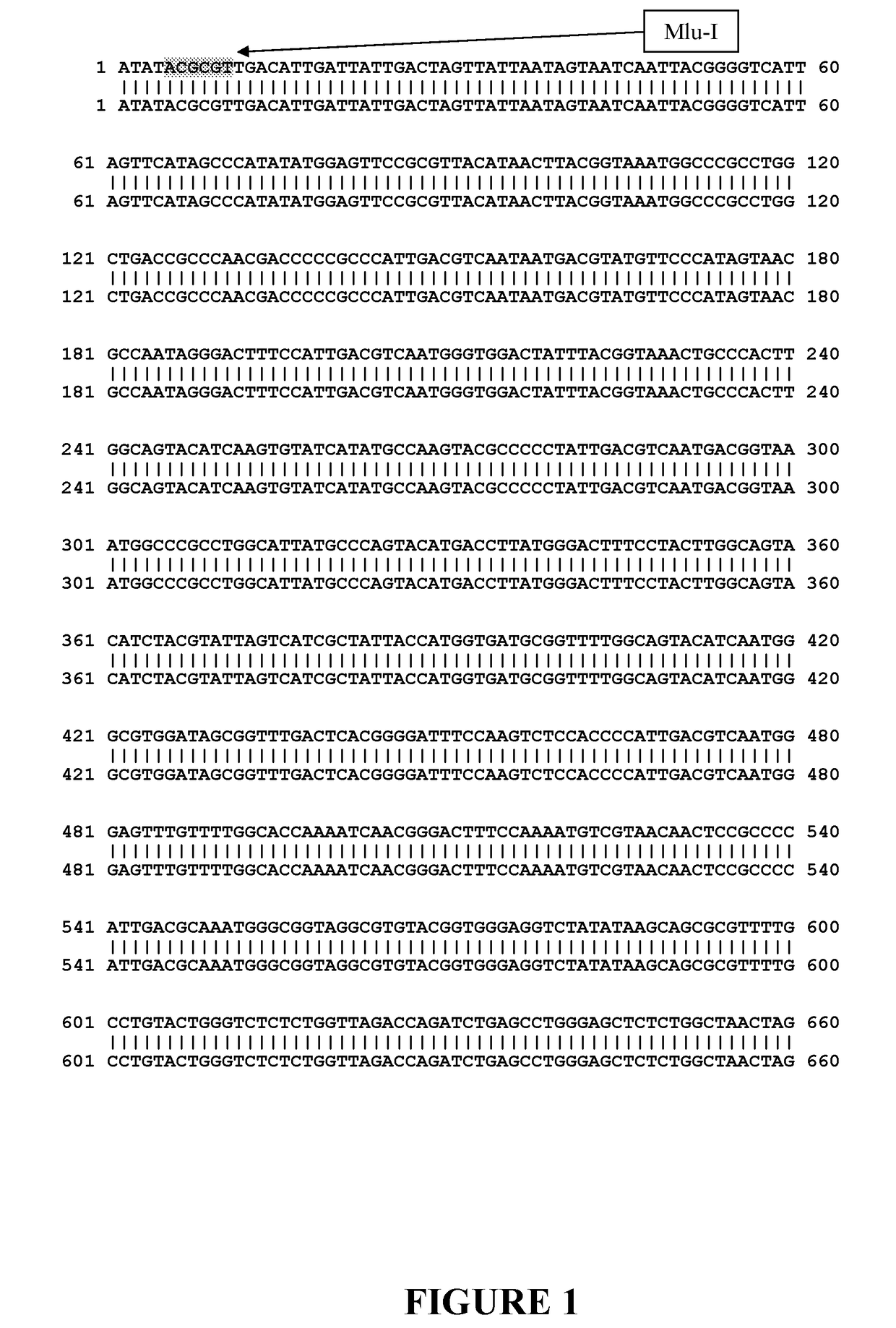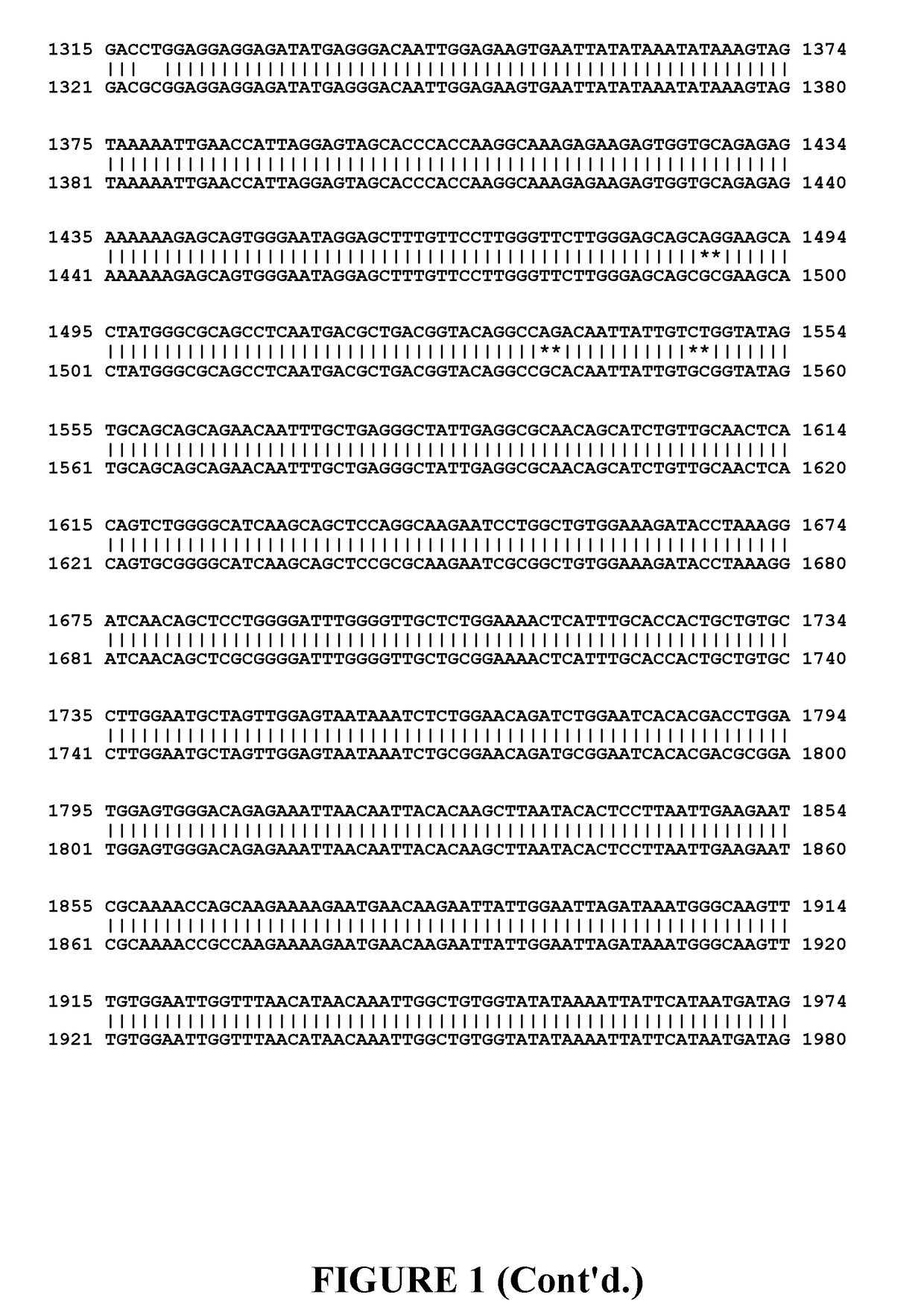Methods and compositions for integration-defective lentiviral vectors
- Summary
- Abstract
- Description
- Claims
- Application Information
AI Technical Summary
Benefits of technology
Problems solved by technology
Method used
Image
Examples
Embodiment Construction
[0060]The present subject matter will now be described more fully hereinafter with reference to representative embodiments of the presently disclosed subject matter. The presently disclosed subject matter can, however, be embodied in different forms and should not be construed as limited to the embodiments set forth herein. Rather, these embodiments are provided so that this disclosure will be thorough and complete, and will fully convey the scope of the presently disclosed subject matter to those skilled in the art.
[0061]Integration-defective lentiviral vectors (IDLVs) efficiently ferry large genetic cargos to dividing and non-dividing cells in vitro and in vivo. The IDLV genome is stable in non-dividing or slowly dividing cells. Thus, in these cells IDLVs maintain long-term gene expression. In dividing cells the presence of IDLVs lacking origin of replication is transient. This property can be employed to transiently express potentially cellular- and geno-toxic proteins whose biol...
PUM
| Property | Measurement | Unit |
|---|---|---|
| Secondary structure | aaaaa | aaaaa |
Abstract
Description
Claims
Application Information
 Login to View More
Login to View More - R&D
- Intellectual Property
- Life Sciences
- Materials
- Tech Scout
- Unparalleled Data Quality
- Higher Quality Content
- 60% Fewer Hallucinations
Browse by: Latest US Patents, China's latest patents, Technical Efficacy Thesaurus, Application Domain, Technology Topic, Popular Technical Reports.
© 2025 PatSnap. All rights reserved.Legal|Privacy policy|Modern Slavery Act Transparency Statement|Sitemap|About US| Contact US: help@patsnap.com



